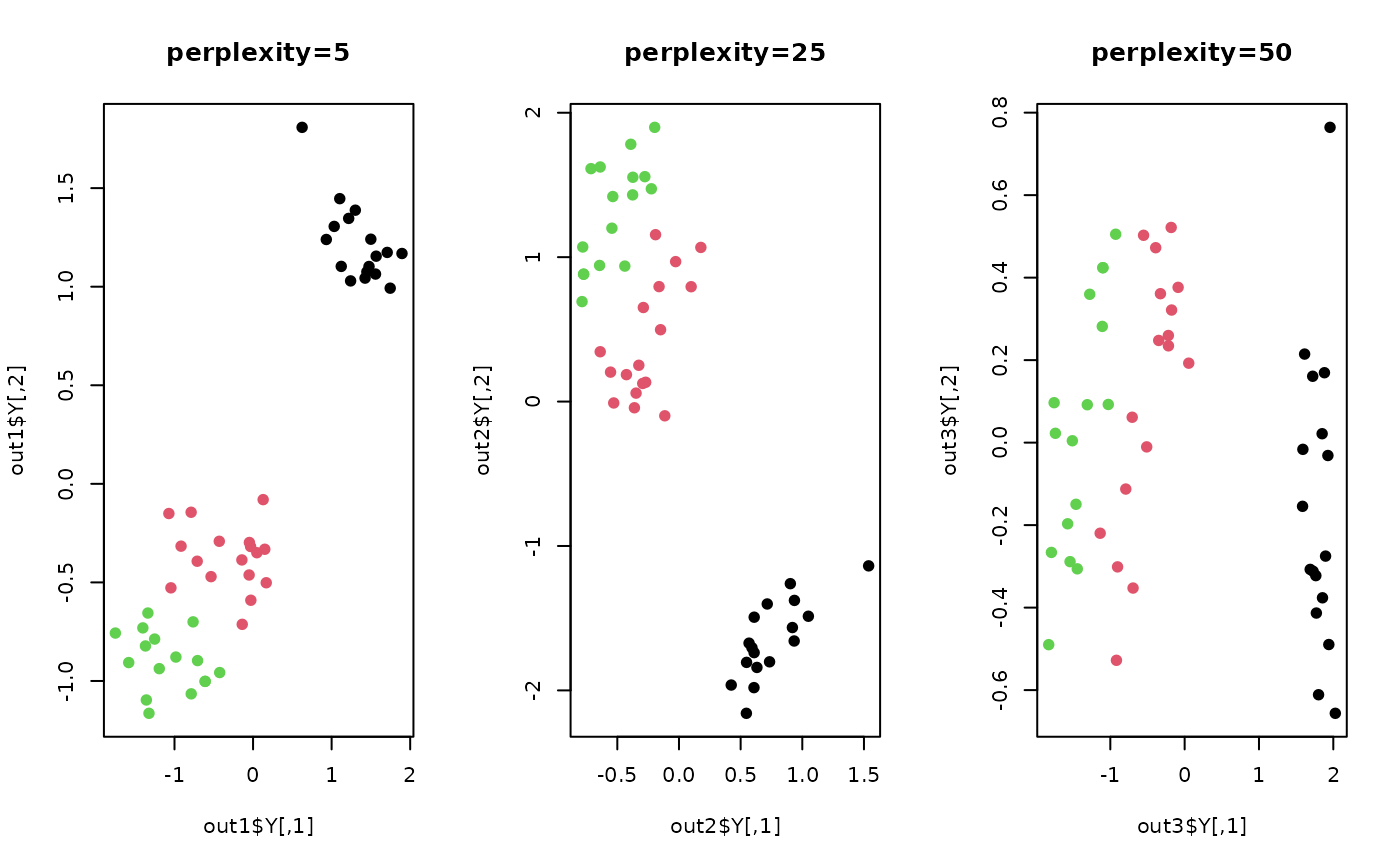Stochastic Neighbor Embedding (SNE) is a probabilistic approach to mimick distributional
description in high-dimensional - possible, nonlinear - subspace on low-dimensional target space.
do.sne fully adopts algorithm details in an original paper by Hinton and Roweis (2002).
do.sne(
X,
ndim = 2,
perplexity = 30,
eta = 0.05,
maxiter = 2000,
jitter = 0.3,
jitterdecay = 0.99,
momentum = 0.5,
pca = TRUE,
pcascale = FALSE,
symmetric = FALSE
)Arguments
- X
an \((n\times p)\) matrix or data frame whose rows are observations and columns represent independent variables.
- ndim
an integer-valued target dimension.
- perplexity
desired level of perplexity; ranging [5,50].
- eta
learning parameter.
- maxiter
maximum number of iterations.
- jitter
level of white noise added at the beginning.
- jitterdecay
decay parameter in \((0,1)\). The closer to 0, the faster artificial noise decays.
- momentum
level of acceleration in learning.
- pca
whether to use PCA as preliminary step;
TRUEfor using it,FALSEotherwise.- pcascale
a logical;
FALSEfor using Covariance,TRUEfor using Correlation matrix. See alsodo.pcafor more details.- symmetric
a logical;
FALSEto solve it naively, andTRUEto adopt symmetrization scheme.
Value
a named Rdimtools S3 object containing
- Y
an \((n\times ndim)\) matrix whose rows are embedded observations.
- vars
a vector containing betas used in perplexity matching.
- algorithm
name of the algorithm.
References
Hinton GE, Roweis ST (2003). “Stochastic Neighbor Embedding.” In Becker S, Thrun S, Obermayer K (eds.), Advances in Neural Information Processing Systems 15, 857--864. MIT Press.
Examples
# \donttest{
## load iris data
data(iris)
set.seed(100)
subid = sample(1:150,50)
X = as.matrix(iris[subid,1:4])
label = as.factor(iris[subid,5])
## try different perplexity values
out1 <- do.sne(X, perplexity=5)
out2 <- do.sne(X, perplexity=25)
out3 <- do.sne(X, perplexity=50)
## Visualize two comparisons
opar <- par(no.readonly=TRUE)
par(mfrow=c(1,3))
plot(out1$Y, pch=19, col=label, main="perplexity=5")
plot(out2$Y, pch=19, col=label, main="perplexity=25")
plot(out3$Y, pch=19, col=label, main="perplexity=50")
 par(opar)
# }
par(opar)
# }